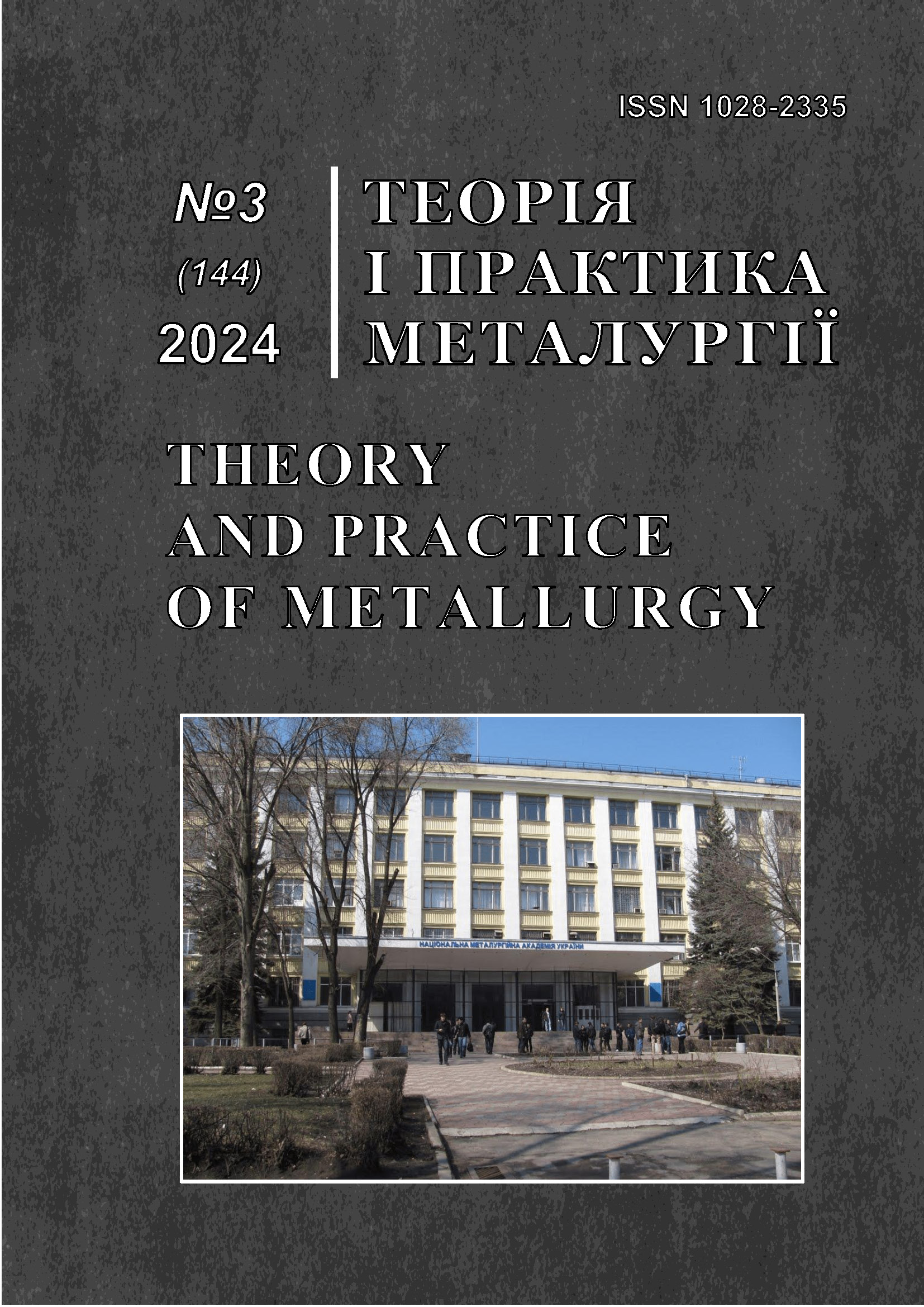Research and analysis of thermal energy processes during secondary steelmaking in the ladle-furnace with the capacity of 100 tons
DOI:
https://doi.org/10.15802/tpm.3.2024.01Keywords:
secondary steelmaking, ladle-furnace unit, thermal energy processes, liquid steel temperature, energy balance, automated control systemAbstract
The goal. The temperature of the melt is one of the most important technological parameters that is controlled during steel processing on the ladle-furnace. Research has shown that not always during processing, the regimes of effective heating of the melt are ensured, which are guaranteed by the suppliers of the equipment under the contract. The reason for this is the significant deviation of the input process parameters (thickness of the slag coating, mass of the melt, temperature of the furnace lining, argon flow rate, and initial temperature of the melt). The melting temperature is controlled by intermediate measurements using thermocouples, which can only be performed when the unit is switched off, leading to an increase in processing time, heat loss, and a decrease in the energy and thermal efficiency of the unit. Therefore, it is necessary to develop a mathematical model for predicting the melting temperature, which, on the one hand, would quite accurately predict the dynamics of the melting temperature, and on the other hand (for simplifying its integration into the ACS), would be described by fairly simple analytical expressions with a minimum of input parameters. The development of a mathematical model of the dynamics of the thermal state of the melt in the ladle-furnace unit also opens up new opportunities for improving existing automated control systems, which is very important from the point of view of implementing the Industry 4.0 paradigm in the enterprises of the Ukrainian mining and metallurgical complex. Methodology. A thermophysical model of the dynamics of the thermal state of the melt in a 100-ton ladle-furnace unit has been developed. Using balance equations, calculations of the dynamics of the thermal state of the melt have been carried out. The energy balance items of the ladle-furnace unit have been estimated. Results and scientific novelty. A dynamic model of thermal processes in a ladle-furnace unit has been developed. Unlike previously obtained thermophysical models, this model takes into account the presence of an open metal surface, the area of which depends on the intensity of purging with
inert gas, as well as the non-stationarity of the initial conditions inside the ladle lining. The model has been adapted to real industrial conditions. Practical value. The obtained analytical expressions for the change in melt temperature allow the integration of the developed model into existing automated control systems (ACS) for secondary steelmaking. The analysis of the unit's energy balance items shows that there are reserves for increasing its energy and thermal efficiency.
References
Ryabchikova, E. S., & Ryabchikov, M. Y. (2013). Mathematical providing for the model of heat exchange processes of the ladle furnace unit. Theory and technology of metallurgical production,(1(13), 29-31
Novokrechenov, S. A., Shvidkiy, V. S., Zhukov, V. P., & Cheremisin, D. D. (2016). Mathematical modeling of the thermal regime of a ladle furnace with bubble gas blowing. Communication IV. Report IV. News of the high educational institutions. Non-ferrous metallurgy, (1), 72-78
Zhadanos, O. V. Derevyanko, I. V., & Chaika, D. O. (2017). Dynamic model of heat engineering processes in electrical arc ladle-furnace plant to develop automated control system. In Proceedings of 9th international conference of young scientists on welding and related technologies, 23-26 May 2017, Kiev, Ukraine, 72-76
Piptuk, V. P., Polyakov, V. F., Samokhvalov, S. E., Isaev, O. B., Pvlov, S. N., & Travinchev, A. A. (2011). Studying of the thermal state of the bath of the ladle furnace installation. Metallurg, (7), 50-53
Razhivin, A. V. (2010). Optimization of the thermal regime of melting in technological complexes “furnace-ladle”. Proceedings of Donetsk National Technical University. Series: Computing equipment and automation, (18(169)), 78-83
Hoppmann, W., Fett, F. N., Klages, T., & Fiege, L. (1988). Energiehaushalt eines Pfannenofens. Stahl und Eisen, 108(18), 841-847
Beitsun, S. V., Zhadanos, O. V., & Michailovky, N. V. (2004). Effect of initial melt and ladle lining temperatures on heat losses during secondary steel processing. Metallurgical heat engineering, 27-34
Downloads
Published
How to Cite
Issue
Section
License
Copyright (c) 2024 Zhadanos O.V., Derevianko I.V., Petrenko М.S., Shepetiak E.А., Matsyshyn V.G.

This work is licensed under a Creative Commons Attribution 4.0 International License.
Authors retain copyright of the published papers and grant to the publisher the non-exclusive right to publish the article, to be cited as its original publisher in case of reuse, and to distribute it in all forms and media. Articles will be distributed under the Creative Commons Attribution 4.0 International (CC BY 4.0) licence.
Authors can enter the separate, additional contractual arrangements for non-exclusive distribution of the published paper (e.g., post it to an institutional repository or publish it in a book), with an acknowledgement of its initial publication in this journal.




